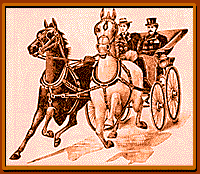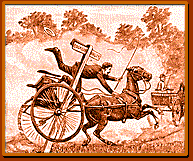 |
 |

|
So how did the unreliable, dangerous, and ear-splitting automobile manage to survive? Consider one of its main competitors: the horse. At the end of the last century, about 175,000 horses lived in New York City and Brooklyn. By one estimate, those horses produced over 1.4 million TONS of manure each year. Wagons and barges clogged New York's rivers and streets. They hauled horse feed in and manure out.
|
 |
|

|
The odor and flies were a nightmare for health officials -- and for everyone else. In the summers, anyone who could afford to fled the city. And even in winter, pedestrians dodged pools of manure slush. Overworked and ill-treated horses dropped dead on the streets. Often, they were left to rot. The clatter of iron-clad carriage wheels on the cobblestone streets made conversation impossible.
|
|
|
Compared to a horse, the automobile was a miracle. It didn't need to be fed and watered. It didn't produce manure. It could carry a number of passengers or a big cargo easily. Trains traveled on strict schedules. But cars traveled when -- and where -- the driver wanted to go. A car could outrun even the strongest, fastest horse. And perhaps best of all, the car looked dazzling. When many people saw a car, they wanted to own one.
|
 |
|

